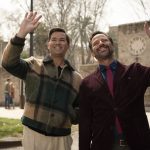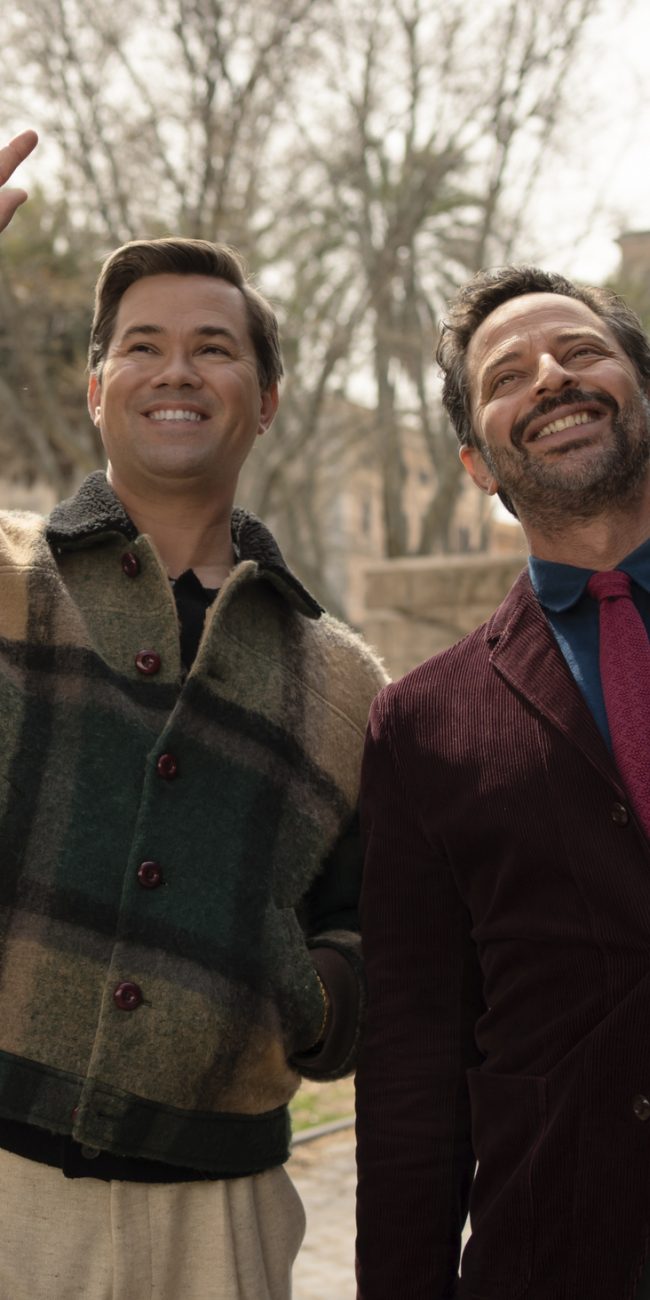A Conversation with Eli Craig & Adam Cesare (CLOWN IN A CORNFIELD)
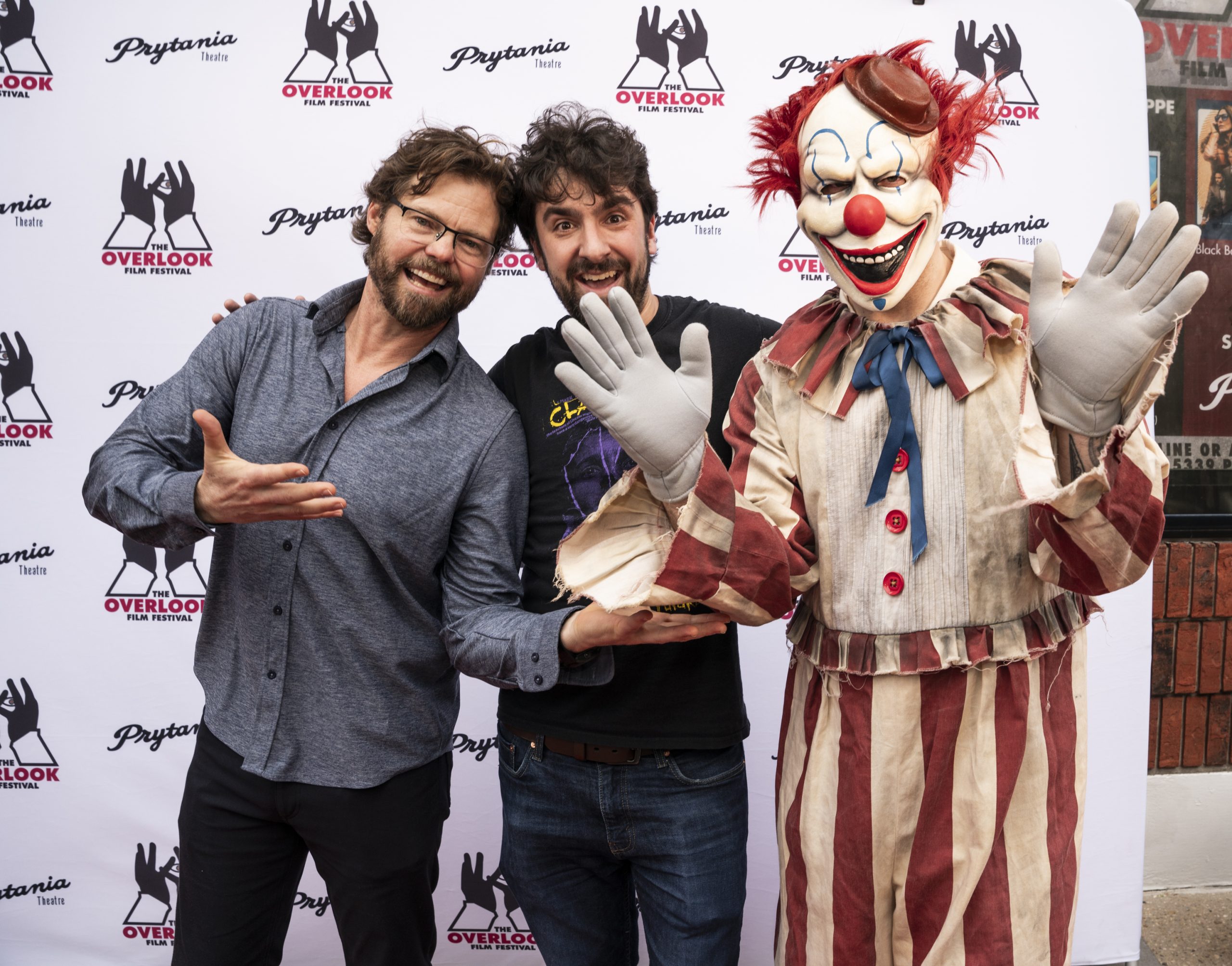
Clown in a Cornfield brings Adam Cesare’s beloved YA horror novel to terrifying life under the direction of Eli Craig, known for the cult classic Tucker and Dale vs. Evil. The film follows Quinn (Katie Douglas) and her father as they relocate to the struggling town of Kettle Springs, Missouri, where economic hardship has taken hold since the beloved Baypen Corn Syrup Factory burned down. As tensions simmer among the fractured community, a sinister clown named Frendo emerges from the cornfields to “cleanse” the town one bloody victim at a time. Starring Katie Douglas, Aaron Abrams, Carson MacCormac, Vincent Muller, Kevin Durand, and Will Sasso, this RLJE Films release delivers both genuine scares and sharp social commentary about generational divides. Director Eli Craig brings his signature blend of horror craftsmanship and dark humor to this adaptation. Both creators share a deep reverence for the slasher genre’s rich history while using Frendo’s reign of terror to explore contemporary anxieties about economic decline, community fracture, and the rage that emerges when the American dream turns into a nightmare.
Hammer to Nail: Thank you so much for taking the time to speak with me today. I’m a huge horror fan. I loved this movie so much. I had the best time watching it. You could tell that its creators love horror movies just as much as me, and that’s my favorite thing in the world. Eli, you describe the cornfield as symbolizing the darkness, chaos, and confusion of today. Could you elaborate on how you visually conveyed these themes through your cinematography choices?
Eli Craig: It begins with Kettle Springs and with Missouri as this incredibly flat space. This idea that a wide open space can be as claustrophobic and off-putting as a very confined space. I wanted to create this feeling of a wide open and yet claustrophobic entrapment in a space.
Then to have that wide open space compressed into an area where you can almost see nothing and the contrast between that. If you’ve ever walked through a cornfield before near harvest time, you can get lost so easily and turned around. Every corn stalk looks the same. You take 20 steps in one direction, turn around, and you’re like, “wait, which way?” Sometimes you’re jumping up and trying to see over the top if you can.
It was something I really wanted, to be down in the corn with them. I’ve seen some films where you’re getting an above view. Occasionally, I wanted to play with that surface line, the surface of water, like Jaws where you can get above and see this piece, but down in it is chaos and horror. It gave me such ability to just play around with that feeling of claustrophobia and entrapment.
HTN: Adam, you mentioned being cautiously optimistic about the film adaptation process. What concerns did you have initially and how were they addressed during the production?
Adam Cesare: I think I was just cautiously optimistic that it would get made. My view towards adaptation has always been, just as a film fan, that books are books and movies are movies. I don’t super get bent out of shape when my favorite books get adapted and they change things. In fact, sometimes I kind of like it.
I’m definitely not the kind of book person who’s like “the book is always better.” I think in some cases it is but not that often. The people that tend to subscribe to that view tend to be readers first and not film fans. There’s almost always a disconnect there.
As a movie guy, I was just pleased as punch when Eli came on, because I’ve been a fan of his for 15 years. The Tuesday that Tucker and Dale vs. Evil came out on DVD, I was at Best Buy buying that movie. At that point its reputation had preceded itself because it had done a great festival run and had a lot of good press. I never was apprehensive because I was like, “Oh, a filmmaker I like and respect is doing it.” Also, the final cut I got is between two hardcover covers, so I’m kind of fine with it.
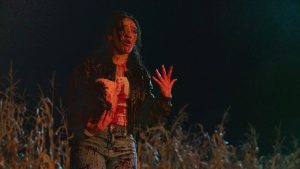
A still from CLOWN IN A CORNFIELD
Then to just watch the film and be so rewarded by how faithful it is to the book, how honored I feel by how the characters were treated and how the situations were treated. And then so surprised by the elements that are different, which are almost all smaller aesthetic elements. The kills are all different, which is just great and surprising. If you’re a fan of the book, here you go, you get double the kills now. It’s just a great way to go about adaptation. I feel very blessed that I get to do press like this and talk about stuff like this because I know a lot of authors don’t get to, which stinks for them, but not for me!!
EC: The adaptation of the book gave me this giant, playful sandbox. Where I placed story elements and where I put things and how I dealt with certain things was mine to play with. But I had all these toys and all these elements that I got to manipulate. When I wasn’t sure what to do in the adaptation, I’d go back to the book and be like, “Oh wait, that could work here and this can work there.”
You find yourself placing things in different areas and making up a few things. But it gives you such a solid foundation because the characters are so fleshed out and the story is so rich that it’s almost a bummer I can’t do more with these characters, but you have to limit certain things.
AC: But you wouldn’t want to though. No one wants the three-hour cut. No one wants the Kingdom of Heaven director’s cut version of Clown in the Cornfield. I only want the 96-minute version. I only want the fast and furious version of it. That’s why I’m so impressed and so in awe of Eli’s writing ability and editorial ability. There’s jokes in this movie that purely work as just cuts, which I think is amazing. That’s a great level of filmmaking when you can look at a door opening and a door closing and that be a laugh. It just got a laugh last night in Philadelphia. That’s awesome.
EC: I absolutely love production design as a joke. When you can do something that’s just visual and have it be humorous.
HTN: What was it like seeing Kettle Springs, a town of your own creation, physically built and brought to life on set? And Eli, could you discuss the process of creating it and bringing it to life?
AC: I only was on set for one day. I had a very young daughter at the time, and she’s still very young, but I was only able to really go to the set for one day. They were gracious enough to have me on set, which was very cool of Eli. I wanted to see the parade. It’s the scene where you see the most Kettle Springs. The audience gets to walk up and down the block and see Kettle Springs Guns and Ammo and all the license plates on the cars in Missouri and stuff like that. I really wanted to live in it. And that was amazing. Just seeing hundreds of craft people working towards the goal of creating this thing I made up, it’s not a real town, we were in a real town outside of Winnipeg, Manitoba, and making it feel like small town America was just incredible.
EC: The fun thing is that this small town doesn’t exist, but it sort of does. We were looking at Norman Rockwell paintings and old Americana and the feeling of the 1940s and 50s American dream. Embracing that and creating a culture around an America that once was really optimistic and really hopeful about the future, disintegrating into a vengeful, angry America that is now looking for revenge.
HTN: The clown is so well done. Did you guys have any discussions about how to design and portray this character visually and thematically, either together or Eli, obviously with your designers?
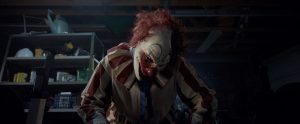
A still from CLOWN IN A CORNFIELD
EC: We started again with the book and the elements that were there. We actually started with the Baypen Corn Syrup Frendo that’s a salesman. He’s a clown that’s trying to sell people corn syrup, and he was a happy-go-lucky looking guy. You’ll see the Baypen Corn Syrup clown is a bit different than the Frendo clown, but there’s a really similar vibe to him.
Then there was this idea that maybe over time, the clown was too close to a radiator and things got a little distorted. The metaphor being the American dream got a little distorted and a little more resentful and grew angry, but yet still had these happy features. The little pork pie hat and the crazy hair. Also, I’m looking at color palettes and stuff like that. The bright orange hair really pops against a green or off-green backdrop of cornfields.
In the film, sometimes there are a couple of frames here and there where you’ll see a Friendo in the corn, but you don’t know that he’s there. If you froze it right at that point, you would see, “Oh my God, that’s a Friendo in there.”
HTN: Adam, you mentioned that the film is packed with surprises and flourishes that made you think, “I wish I’d written that in the book.” Could you share an example? And Eli, could you discuss generally how that screenwriting process worked?
AC: There’s a million things. As I mentioned, all the kills are different. There’s a kill with a bench press that is beautiful. There is a certain mise en scène in how this person dies on this bench press that is just so great to me. I’d take it. I’d steal a few of Eli’s kills if I could.
EC: I think it’s this trick of really trying to make it your own, but also totally honoring the book and giving the fans what they want out of it. It’s this bouillabaisse of great material that you’re trying to pluck from. You’re like, “Oh, I’m going to bring out this piece and that piece and I’m going to put this here.”
A lot of movies are about withholding information and revealing them. When do I reveal this element that I’m withholding and how do I reveal it? A lot of times for me, I’m trying to surprise both the audience, but also the characters in the story. Ideally, sometimes for big ones, I want the audience to be exactly where the characters in the story are. If the timing is just right, everybody goes “ohhh” at the same time and makes that realization. That’s quite fun for me.
HTN: The scene where the girls play with the loose, decapitated head and the arrow in her back before Quinn exclaims that she does not have a pulse and all hell breaks loose. It’s really just a great use of timing. Could you talk about designing that moment and what was important to you?
EC: That was where I knew some of my skills could pay off in the movie and I could really play around a bit. I had spent a lot of time setting up this part that they were YouTubers, they were pranksters and they were pranking each other. It’s important to me that it’s believable that they would think this is a prank. Otherwise this element doesn’t work.
But then when somebody’s decapitated head flies out, their first thought is that this is a prank and they start playing around with the head. But the audience in this case knows that it’s not a prank. That to me is a lot of humor. That’s where humor comes from, when the audience is ahead of the characters.
Obviously I wrote and directed Tucker and Dale, it’s very much like Three’s Company kind of humor. I grew up watching Three’s Company. So this is my chance at bloody, disgusting Three’s Company humor, and I really enjoy that part of the film. So I’m glad you liked it.
HTN: I need to ask about my favorite kill, which is where she uses her foot to rip out the pitchfork and then jam it into the clown. Then they both land next to each other and Janet says, “I hate you.” The clown says, “I hate you too.” Very funny, great moment. How did it come to be?
EC: This is the first real Quinn kill. Quinn and I really wanted to make it epic. Her and Janet have this relationship of back and forth and they really care for each other. But Janet hates Quinn and she’s always hated her. She hates that she’s there. The new girl is taking all of her thunder, you know?
I’m so glad you noticed the foot on the chest because it was a big thing for us. I was telling Katie Douglas who plays Quinn, you really have to put your foot on her chest and yank this thing out. It happened so fast in the movie but there’s something so brutal about putting your foot down on somebody. You know she’s going to die this way and her dad’s a doctor, you’d have to leave this in and hope you could get somebody to the hospital. So she knows Janet’s gonna die. She yanks it out, turns around, kills the clown, epic first kill.
Then they land right next to each other. Once they landed right next to each other, I told Cassandra who played Janet, “You hate her. Say, ‘I hate you, Quinn,’ but you’re actually kind of like, ‘I love you and I hope you make it.'” I think that line plays well because she says it with a little bit of love and finality.
Then Friendo saying, “Me too.” That was just me writing it and looking at that, I thought, “It just has to be this.” When I showed it to the producer, he loved it. John Fisher was like, “This is hilarious.” I don’t know where the lines come from. They just sometimes ask for it to be written that way.
AC: It’s the line. It’s the read. It’s your direction of the read. That’s a great little story to tell because it showcases so much of your talent and Cassandra’s talent. She did read it that way. When you hear it in the film, even if you’re not consciously getting there, like “I love you and I hope you make it,” you kind of do. I got it. I’ve seen the film a few times.
– Jack Schenker (@YUNGOCUPOTIS)



